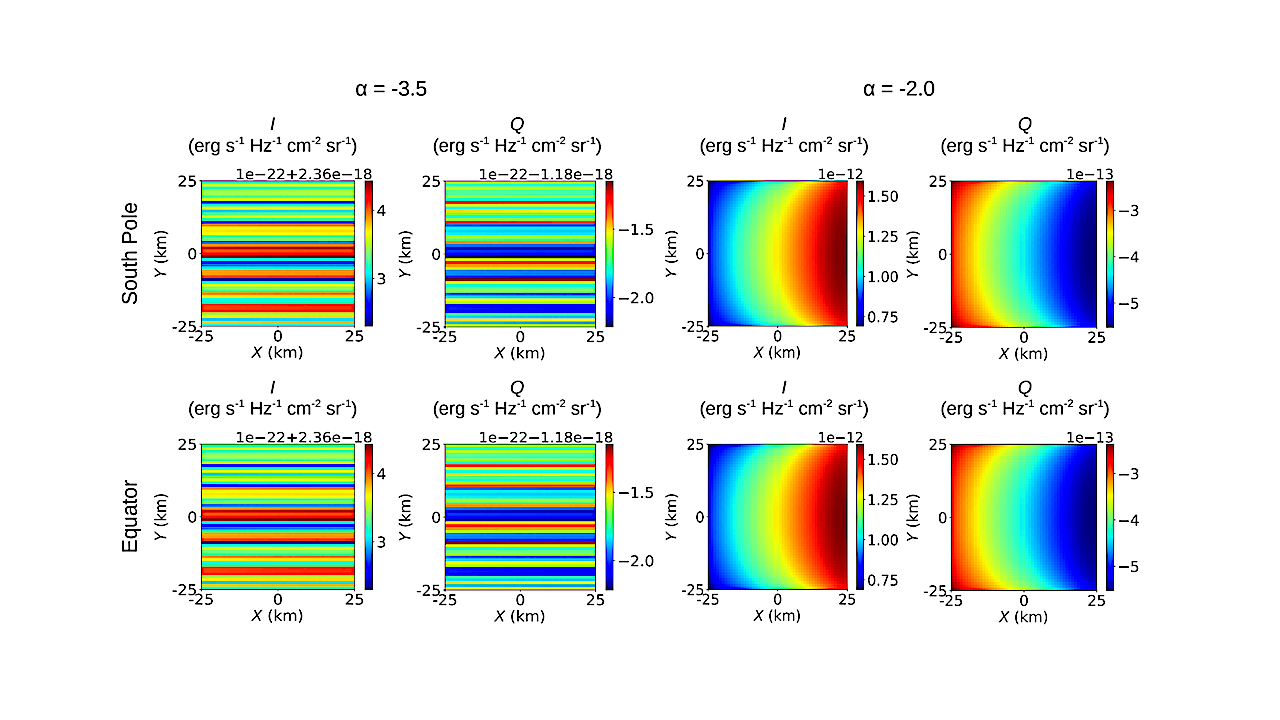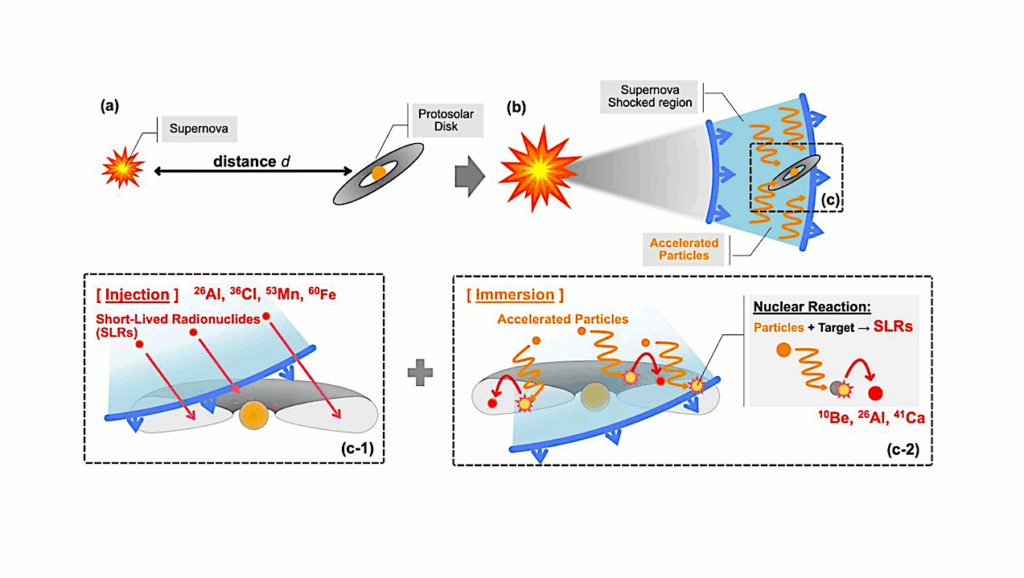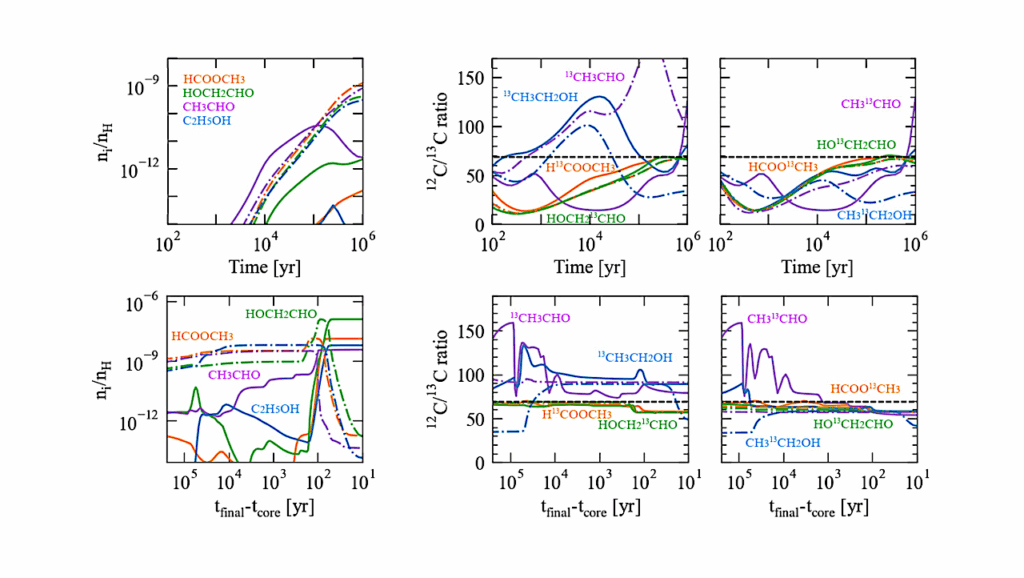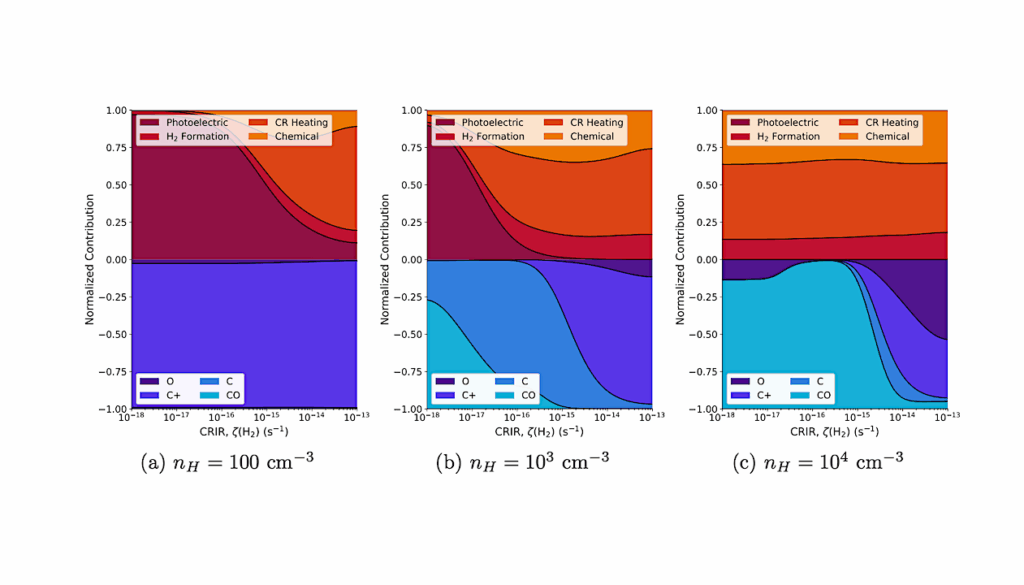Polarized Microwave Emission From Space Particles In The Upper Atmosphere Of The Earth

Tons of space particles enter the Earth atmosphere every year, being detected when they produce fireballs, meteor showers, or when they impact the Earth surface.
Particle detection in the showers could also be attempted from space using satellites in low Earth orbit. Measuring the polarization would provide extra crucial information on the dominant alignment mechanisms and the properties of the meteor families. In this article, we evaluate the expected signal to aid in the design of space probes for this purpose.
We have used the RADMC-3D code to simulate the polarized microwave emission of aligned dust particles with different compositions: silicates, carbonates and irons. We have assumed a constant spatial particle density distribution of 0.22 cm−3, based on particle density measurements carried during meteor showers.
Four different grain size distributions with power indices ranging from −3.5 to −2.0 and dust particles with radius ranging from 0.01 μm to 1 cm have been considered for the simulations. Silicates and carbonates align their minor axis with the direction of the solar radiation field; during the flight time into the Earth atmosphere, iron grains get oriented with the Earth’s magnetic field depending on their size.
Alignment direction is reflected in the Q-Stokes parameter and in the polarization variation along the orbit. Polarization depends on the composition and on the size distribution of the particles. The simulations show that some specific particle populations might be detectable even with a small probe equipped with high sensitivity, photon-counting microwave detectors operating in low Earth orbit.
Jennifer López-Viejobueno, Leire Beitia-Antero, Ana I. Gómez de Castro
Subjects: Earth and Planetary Astrophysics (astro-ph.EP); Instrumentation and Methods for Astrophysics (astro-ph.IM); Space Physics (physics.space-ph)
Cite as: arXiv:2310.08941 [astro-ph.EP](or arXiv:2310.08941v1 [astro-ph.EP] for this version)
https://doi.org/10.48550/arXiv.2310.08941
Focus to learn more
Related DOI:
https://doi.org/10.1093/mnras/stad2748
Focus to learn more
Submission history
From: Jennifer López-Viejobueno
[v1] Fri, 13 Oct 2023 08:14:49 UTC (6,304 KB)
https://arxiv.org/abs/2310.08941
Astrobiology








